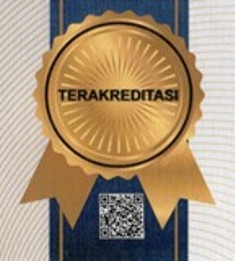The Influence of Use of Comic Media and Learning Motivation on Learning Outcomes in The Subject of Integrated Social Sciences Class Vii Primary School State 25 Takengon City
DOI:
https://doi.org/10.24036/sjdgge.v8i1.576Keywords:
Comic Media, Motivation, Learning ResultsAbstract
This research aims to describe; a) the influence of using comic media on learning outcomes in integrated Social Sciences subjects, b) the influence of learning motivation on learning outcomes in Integrated Social Sciences subjects, c) the influence of using comic media and learning motivation on student learning outcomes in Science subjects Integrated Social Knowledge. This type of research is experimental research using a quantitative approach. The subjects of this research were 22 students of Class VII of Takengon 25 State Junior High School. This research design uses One Group Pretest-Posttest Design. Data collection techniques use observation, questionnaires and documentation. Data analysis techniques include the t-test and anova test. The research results show that: a) there is a significant influence of the use of comic media on student learning outcomes, where the value of Sig. for the (partial) influence of there is a significant influence of learning motivation on student learning outcomes, where the Sig. for the (partial) influence of c) there is a significant influence of the use of comic media and learning motivation on student learning outcomes, where the value of Sig. for the (simultaneous) influence of X1 and X2) simultaneously on Learning Outcomes (Y).
Downloads
References
[2] Nasiwan, Sudrajat, & Wijayanti, A., T. (2017). Profesionalisme guru IPS SMP Kabupaten Sleman Yogyakarta. JIPSINDO (Jurnal Pendidikan Ilmu Pengetahuan Sosial Indonesia), 4(2), 129-149. DOI:https://doi.org/10.21831/jipsindo.v4i2.17572
[3] Prasetya, S. P. (2014). Media pembelajaran Geografi. Ombak.
[4] Sari, M. K. (2014). Pengaruh media peta interaktif terhadap pemahaman dan hasil belajar siswa pada mata pelajaran IPS kelas IV SD. Premier Education, 2(2), 56-78. DOI: http://doi.org/10.25273/pe.v4i01.307
[5] Surhani & Purwanti. (2018). Upaya meningkatkan motivasi belajar siswa. Jurnal Bimbingan dan Konseling , 5(2), 131-145.
[6] McCloud, Scoot. 2001. Memahami Komik. Jakarta: Kepustakaan Populer Gramedia.
[7] Gumelar.2004. Comic Making. Jakarta: PT Indeks
[8] Daryanto. 2011. Media Pembelajaran. Bandung: Satu Nusa
[9] Shadely, Hasan. 1990. Ensiklopedia Nasioal Indonesia. Jakarta: Ichran baru-Van
Hoeve.
[10] Trimo. 1997. Media Pendidikan. Jakarta: Depdikbud
[11] Sardiman. 2012. Interaksi dan Motivasi Belajar Mengajar. Jakarta: Rajawali Press.
[12] Andjarwati, T. (2015). Motivasi dari sudut pandang teori hirarki kebutuhan Maslow, teori dua faktor Herzberg, Teori X Y Mc Gregor, dan teori motivasi prestasi Mc Clelland. Jurnal Ilmu Ekonomi dan Management, 1(1), 45-54. DOI: 10.30996/jmm17.v2i01.422
[13] Ridho, M. (2020). Teori motivasi mcclelland dan implikasinya dalam pembelajaran pai. Jurnal Studi Keislaman dan Ilmu Pendidikan, 8(1), 1-16. DOI: 10.36088/palapa.v8i1.673.
[14] Aghni, R. I. (2018). Fungsi dan jenis media pembelajaran dalam pembelajaran akuntansi. Jurnal Pendidikan Akuntansi Indonesia, 3(2), 98-107. DOI: 10.21831/jpai. v16i1.20173.
[15] Palittin, I. D. (2019). Hubungan motivasi belajar dengan hasil belajar siswa. Magistra: Jurnal Keguruan dan Ilmu Pendidikan, 6(2), 101-109. DOI: 10.31942/mgs.
[16] Supardi. (2022). Disadvantaged students’ experiences with social studies distanced learning: A phenomenological study, The Qualitative Report, 27(5), 1460-1478, DOI: https://doi.org/10.46743/2160-3715/2022.5237
[17] Picciano, A. G. (2006). Blended learning implication for growth and access. Journal of asynchronous learning networks, 10(3).
[18] Sudrajat. (2020). Revitalisasi nilai-nilai budaya Jawa pada sekolah berbasis budaya, JP (Jurnal Pendidikan: Teori dan Praktik), 5(1), 65-84, DOI: https://doi.org/10.26740/jp.v5n1.p%25p
[19] Wahidmurni, M. P. (2017). Metode pembelajaran IPS: pengembangan standar proses pembelajaran IPS di sekolah/madrasah. Ar-Ruzz Media
[20] Bakar, R. (2014). The Effect of Learning Motivation on Students Productive Competencies in Vocational High School,West Sumatra. International Journal of Asian Social Science, 4 (6), hlm. 722-732.
[21] Valerio, K. (2012). Intrinsic Motivation in the Classroom. Journal of Student Engagement: Education Matters, 2 (1), hlm. 30-35.
[22] Hamdu, G. & Agustina. L. (2011). Pengaruh Motivasi Belajar Siswa terhadap Prestasi Belajar IPA di Sekolah Dasar. Journal Penelitian Pendidikan, 12 (1), hlm. 81-86.
[23] Lim, D. H., & Morris, M. L. (2009). Learner and Instructional Factors Influencing Learning Outcomes within a Blended Learning Environment. Educational Technology & Society, 12 (4), hlm. 282-293.
[24] Mappeasse, M. Y. (2009). Pengaruh Cara dan Motivasi Belajar Terhadap Hasil Belajar Programmable Logic Controller (PLC) Siswa Kelas III Jurusan Listrik Sekolah Menengah Kejuruan Negeri 5 Makassar. Journal MEDTEK, 1 (2), hlm. 136-143.












